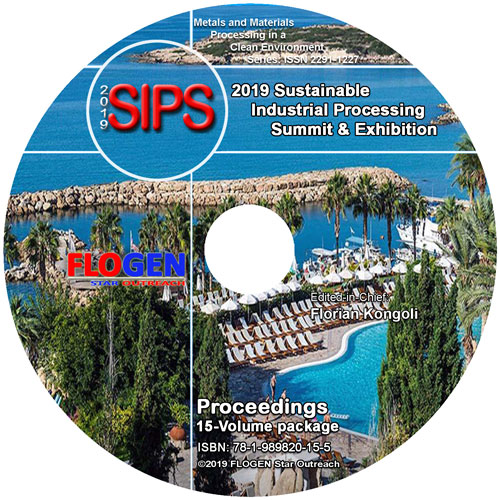2019-Sustainable Industrial Processing Summit
SIPS2019 Volume 8: Usui Intl. Symp. / Advanced Sustainable Iron and Steel Making
| Editors: | F. Kongoli, P. Assis, M.C. Gomez-Marroquin, S. Kitayama, H. Konishi, A. Murao, S. Nomura, H. Ono, H. Saxen, K. Seto, J.I. Tani |
| Publisher: | Flogen Star OUTREACH |
| Publication date: | 20 December 2019 |
| Pages: | 250 pages |
| ISBN: | 978-1-989820-07-0 |
| ISSN: | 2291-1227 (Metals and Materials Processing in a Clean Environment Series) |

CD shopping page
Heat Loss Control in Stave Cooled Blast Furnace by Optimizing Gas Flow Pattern through Burden Distribution
Basant Kumar Singh1; Bhaskar Ramdasu1; Padma pal1; Dhiren Patnaik2; G.S.R. Murthy .3; Vishwakarma Raj Kumar3; Kumar Lal Santosh3; Jaya Krishna P.3;1TATA STEEL, Jamshedpur, India; 2TATA STEEL LTD., JAMSHEDPUR, India; 3TATA STEEL LTD., Jamshedpur, India;
Type of Paper: Regular
Id Paper: 220
Topic: 2
Abstract:
The productivity of Blast Furnaces is largely impacted by fuel efficiency. Control of heat loss is one of the enabling parameters for achieving lower fuel rate. I-Blast Furnace is the latest and largest Blast Furnace of Tata Steel Jamshedpur with a working volume of 3230m3 and with rated capacity of 3.055 million tons per annum. Optimizing heat losses in Belly and Bosh zones remains a major challenge for blast furnace operators.
The I-Blast furnace has installed Cast Iron & Copper Staves cooling members where copper staves are installed in Belly, Bosh & Lower Stack, whereas cast iron staves are installed in the upper stack area. Stave cooled Blast Furnaces are prone to higher heat losses in the Belly and Bosh regions with increase in coal injection rate as Bosh gas volume increases. Under these conditions, managing gas flow patterns through proper burden distribution, casting techniques, and maintenance of desired raw material qualities are of upmost importance for sustaining high injection rates. This study details the burden distribution control by the Ore & Coke ratio adjustment at the wall and center of the Blast Furnace as the coal injection rates increase from 140 kg/thm to 220 kg/thm. Control of blowing parameters, casting philosophy, specification for raw materials, and division of operational practices for controlling heat losses is also elaborated with the model that is used to visualize heat loss patterns in different zones of the Blast Furnace.
Keywords:
Blast; Carbon; Coke; Combustion; Industry; Iron;References:
1. Principles of blast furnace ironmaking: Theory and practice: A. K Biswas2. An Introduction to Modern Iron Making" by R. H. Tupkary and V. R. Tupkary